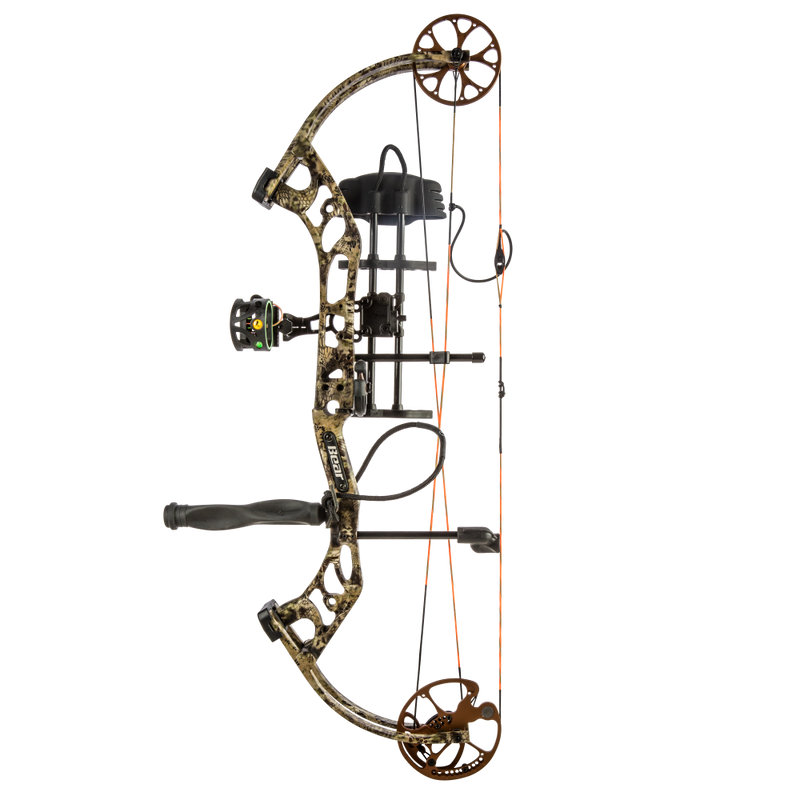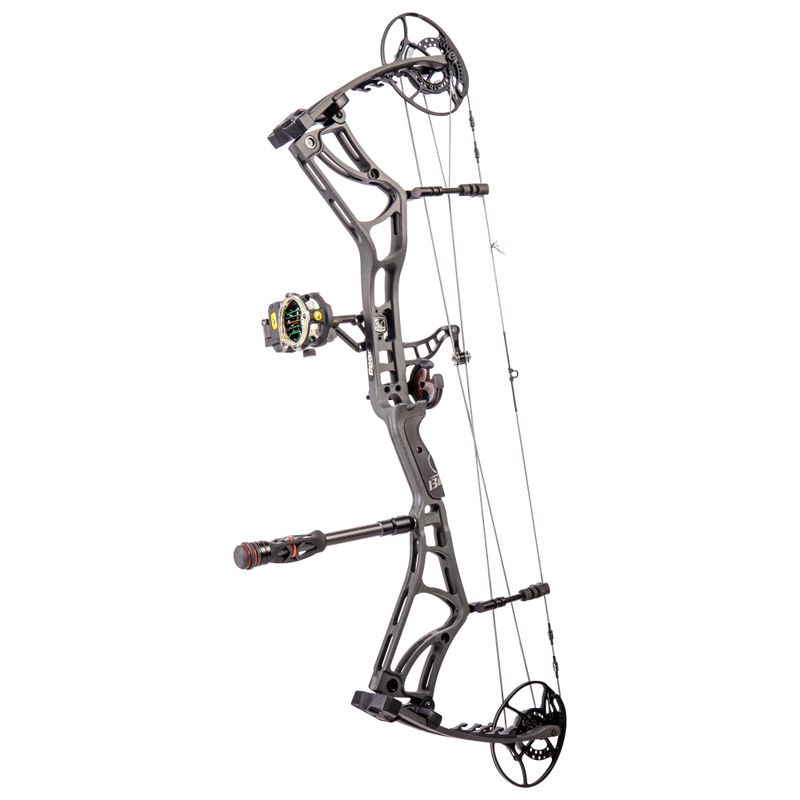Enhance Your Shot: Picking the Right Archery Stabilizer
Wiki Article
Maximize Your Archery Efficiency With the Perfect Stabilizer: an Extensive Buyer's Guide
Archery fanatics recognize the relevance of having the ideal equipment to enhance their performance. While arrowheads and bows might take the spotlight, an important item of equipment that usually goes overlooked is the stabilizer. A stabilizer can substantially influence your capturing precision and stability, but finding the ideal one can be a daunting task. In this thorough customer's overview, we will check out the different sorts of stabilizers, essential aspects to think about, the value of correct size and weight, choosing the best damping system, and upkeep tips. Whether you're a skilled archer or just beginning out, this guide will certainly aid you navigate the world of stabilizers and maximize your archery efficiency.Kinds Of Stabilizers
There are three main sorts of stabilizers commonly made use of in archery performance. These stabilizers play an essential role in boosting accuracy and reducing bow torque. The very first type is the long pole stabilizer. Long rod stabilizers are typically affixed to the front of the bow and prolong outwards. They give equilibrium and stability throughout the shot, minimizing any unneeded movement. Lengthy pole stabilizers are specifically effective in minimizing bow torque, enabling for an extra constant and steady launch.The second kind of stabilizer is the side rod stabilizer. Side pole stabilizers are connected to the side of the bow and help counterbalance any side movements. They help in maintaining a constant and straight objective, especially when managing crosswinds or unequal terrain. Side pole stabilizers are especially valuable for archers that fire from a standing setting and require security on both the upright and horizontal axes.
The third kind of stabilizer is the V-bar stabilizer. V-bar stabilizers are usually used combined with side pole stabilizers to further enhance security. They affix to the bow and the side rods, creating a triangular configuration that disperses weight evenly. This setup helps in reducing resonances and oscillations, leading to a smoother and much more controlled shot.
When choosing the appropriate tools to maximize archery efficiency,Comprehending the various types of stabilizers is crucial. Each stabilizer kind serves a specific purpose, and picking the appropriate mix can substantially improve precision and consistency on the range or in the field.
Key Elements to Consider

Primarily, it is important to consider the length and weight of the stabilizer. Longer stabilizers offer boosted security and equilibrium, while shorter ones offer more ability to move. The weight of the stabilizer influences the overall balance of the bow, and it is very important to locate a stabilizer that matches the weight of your bow.
One more vital element to take into consideration is the material of the stabilizer. Stabilizers are commonly made from aluminum, carbon, or a mix of both. Aluminum stabilizers are long lasting and supply excellent vibration dampening, while carbon stabilizers are lightweight and offer premium resonance absorption.
Furthermore, it is necessary to review Recommended Reading the style and adjustability of the stabilizer. Some stabilizers come with adjustable weights and dampeners, allowing you to customize the equilibrium and resonance control. Furthermore, considering the mounting choices and compatibility with your bow is vital to make certain a appropriate and safe fit.
Lastly, budget plan is a substantial element to take into consideration. Stabilizers can be found in a variety of prices, and it is vital to find one that fits within your budget plan while still fulfilling your efficiency requirements.
Relevance of Appropriate Size and Weight

Proper size and weight are critical variables that dramatically affect the performance of an archery stabilizer. The size of the stabilizer identifies its performance in decreasing bow torque and vibrations. archery stabilizer. Longer stabilizers supply higher security and equilibrium, resulting in improved accuracy and consistency in arrow trip. On the other hand, much shorter stabilizers are extra manoeuvrable and supply better control during rapid target purchase. Consequently, it is important to take into consideration the shooting style, target range, and personal choice when selecting the size of a stabilizer.
In a similar way, the weight of the stabilizer plays a vital function in accomplishing ideal performance. A much heavier stabilizer absorbs more resonance and minimizes bow activity throughout the shot, resulting in a steadier aim and tighter groups.
Moreover, the size and weight of the stabilizer ought to work with the archer's physical stamina and capturing technique. By choosing the right length and weight, archers can enhance their stability, decrease bow torque, enhance precision, and boost overall performance. It is advised to talk to knowledgeable archers or specialists to make sure the best suit in between the stabilizer and specific capturing demands.
Choosing the Right Damping System
The option of an ideal damping system is essential in enhancing the efficiency of an archery stabilizer. A damping system is created to decrease the resonances and sound produced when an arrow is released, offering the archer with a more accurate and steady shot. When picking the right damping system for your stabilizer., there are several variables to take into consideration.First of all, it is essential to take sites into consideration the sort of product made use of in the damping system. Rubber and rubber-like materials are frequently made use of due to their capacity to soak up resonance successfully. These products are additionally long lasting and lightweight, making them optimal for archery stabilizers.
Secondly, the layout of the damping system needs to be taken into account (archery stabilizer). Look for a system that uses several contact factors with the stabilizer, as this will disperse the vibrations much more equally and additionally improve the stabilizer's efficiency
Additionally, think about the adjustability of the damping system. Having the ability to adjust the level of damping can be beneficial, as various archers might have varying preferences and shooting styles.
Lastly, it is necessary to guarantee that the selected damping system is suitable with your stabilizer. Inspect the measurements and specifications to make sure a proper fit.
Upkeep and Treatment Tips
To make certain optimum efficiency and longevity of your archery go right here stabilizer, it is vital to apply proper maintenance and care techniques. Lubing the relocating components of the stabilizer, such as the dampers and weight system, is likewise essential to make sure smooth procedure. By complying with these maintenance and treatment pointers, you can take full advantage of the efficiency and long life of your archery stabilizer.Verdict
In verdict, choosing the appropriate stabilizer for archery is vital for making best use of performance. By thinking about variables such as stabilizer type, size, weight, and damping system, archers can improve their accuracy and security. In addition, correct maintenance and care of the stabilizer is crucial for its long life and optimum functioning. With the appropriate stabilizer and appropriate attention to these elements, archers can improve their general archery experience.The 2nd type of stabilizer is the side rod stabilizer.The 3rd kind of stabilizer is the V-bar stabilizer. V-bar stabilizers are normally used in conjunction with side rod stabilizers to even more enhance stability. The weight of the stabilizer impacts the general equilibrium of the bow, and it is vital to find a stabilizer that enhances the weight of your bow.
Light weight aluminum stabilizers are resilient and give exceptional vibration wetting, while carbon stabilizers are light-weight and deal superior vibration absorption.
Report this wiki page